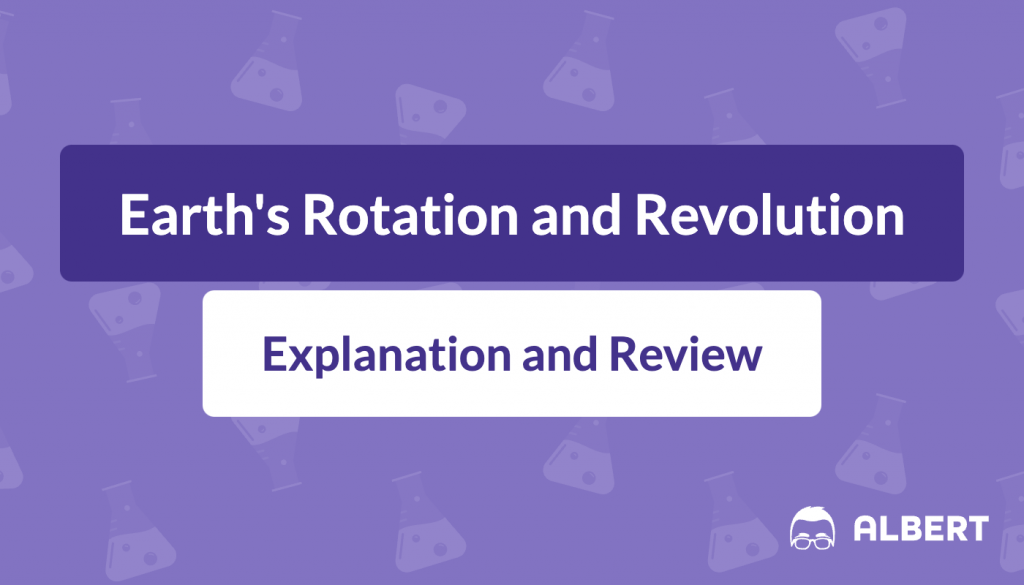Have you ever wondered what keeps the day transitioning into the night and back again? This daily cycle is all thanks to Earth’s rotation, which affects everything from the time zones we follow to the weather patterns we experience. This post will review Earth’s rotation and revolution and illustrate how they impact our daily lives. Understanding Earth’s motion isn’t just about knowing why the sun rises and sets but also about comprehending a basic principle that underpins life on our planet.
What We Review
Rotation vs Revolution: What’s the Difference?
Often, the terms “rotation” and “revolution” are used interchangeably. However, they describe distinct movements of Earth that profoundly affect our environment. So, what is the difference between rotation and revolution?
Rotation refers to the Earth spinning around its axis. Imagine an invisible line running through the Earth from the North Pole to the South Pole; this is Earth’s axis. Every 24 hours, Earth completes one full rotation, which is why we have day and night.
Revolution, on the other hand, is the Earth’s journey around the sun. This path isn’t a perfect circle but rather an elliptical orbit, and it takes about 365.25 days to complete. This revolution is the reason we have seasons.
Understanding Earth’s Rotation

Earth’s rotation is how our planet spins around its axis. Picture Earth like a giant top spinning in space, completing a full turn every 24 hours. This rotation gives us the cycle of day and night—daytime when your location faces the sun and nighttime when it turns away.
Historically, the realization that Earth rotates came from observing the sun’s and stars’ apparent movement. Ancient astronomers initially thought that Earth was the center of the universe and everything revolved around it. However, figures like Copernicus and Galileo challenged this view, providing evidence that the Earth spins on its axis. The Foucault pendulum, introduced in the 19th century, offered direct, observable proof of the Earth’s rotation. As you can see, it swings in a consistent direction while the Earth turns beneath it.
Earth’s Revolution Around the Sun
Earth’s revolution around the sun describes our planet’s yearly journey in space. This orbit isn’t a perfect circle; it’s slightly stretched, causing Earth’s distance from the sun to vary throughout the year.
This elliptical path brings us closer to the sun at perihelion in early January and farther away at aphelion in early July. This slight variation doesn’t significantly impact our climate. The primary influence on seasons is Earth’s axial tilt. As Earth revolves, its tilted axis leads to varying sunlight angles across the globe, resulting in seasonal changes. For example, when the Northern Hemisphere tilts towards the sun, it experiences summer. Meanwhile, the Southern Hemisphere faces away, experiencing winter, and vice versa.
Earth completes this orbit in about 365.25 days, a fact that defines the length of our year. This is why we have a leap day every four years to keep our calendar in sync with Earth’s orbit.
Real-Life Implications of Earth’s Rotation and Revolution
Impact on Navigation
Historically, Earth’s rotation has been crucial for navigation, especially before the advent of modern technology. Mariners relied on the position of the stars in the night sky to find their way. The postition of the stars change predictably as the Earth rotates, and seafarers use this to determine their latitude and longitude at sea. Even today, with GPS technology, understanding Earth’s rotation is vital as it influences the positioning of satellites and the accuracy of GPS signals.
Influence on Timekeeping
The concept of a day is directly tied to Earth’s rotation. Our 24-hour day is Earth’s period to complete one full rotation on its axis. Time zones are determined by the Earth’s rotation relative to the sun, dividing the planet into different time zones based on longitudinal degrees. As Earth rotates, different parts of the world experience sunrise and sunset at different times, leading to various time zones.
Effects on Technology

Earth’s rotation and revolution have significant impacts on technology, particularly in the fields of telecommunications and space exploration. Satellite communication systems must account for Earth’s movement to maintain alignment and provide consistent coverage. Astronomical observatories and space launch facilities must also consider Earth’s rotation when planning observations and launches.
Frequently Asked Questions About Earth’s Rotation
What causes the Earth’s rotation?
Earth’s rotation is due to how it formed and the conservation of angular momentum. When our solar system formed, the cloud of gas and dust that became the Earth was spinning, and as it condensed to form the planet, it retained this spinning motion.
What is Earth’s rotational speed?
Earth’s rotational speed is fastest at the equator, reaching about 1,670 kilometers per hour (or around 1,040 miles per hour). It decreases as you move toward the poles, where it is effectively zero. This variation affects phenomena such as weather patterns and the Coriolis effect, which influences the direction of ocean currents and wind.
Why can’t we feel Earth’s rotation?
Earth’s rotation is very consistent and doesn’t change speed abruptly, so we don’t feel any acceleration or deceleration. Plus, the Earth is so large that its curvature is difficult to perceive, making the rotation feel even less apparent.
What would happen if the Earth stopped rotating?
If the Earth stopped rotating, it would be catastrophic. One side of the Earth would be in constant sunlight, while the other side would be in perpetual darkness. This would cause extreme temperature changes, disrupt weather patterns, and eliminate the day-night cycle as we know it.
How does Earth’s revolution around the sun influence seasons?
The seasons are influenced by Earth’s axis tilt and elliptical orbit around the sun. As Earth revolves, different parts of the planet receive varying amounts of sunlight, leading to seasonal changes.
Why is a year 365.25 days long and not exactly 365 days?
A year is 365.25 days long. This is the time it takes for Earth to complete one full orbit around the sun. The extra 0.25 day adds on over four years to an additional day. So, we have a leap year every four years to keep our calendar in sync with Earth’s orbit.

How does Earth’s elliptical orbit affect our distance from the sun?
Earth’s elliptical orbit means its distance from the sun varies throughout the year. We are closest to the sun (perihelion) around early January and farthest (aphelion) around early July, but this difference in distance doesn’t significantly affect our planet’s climate.
Conclusion
In this post, we’ve reviewed how Earth’s rotation and its orbit around the sun shape our world. The rotation of Earth creates the cycle of day and night, setting a natural rhythm for all life forms. Even though we don’t feel it, this rotation influences our weather and the environment every single day.
Then there’s Earth’s journey around the sun, which, combined with its tilt, gives us the seasons. This revolution impacts everything from the weather we experience to the crops farmers grow.
Earth’s spinning on its axis and its path around the sun do more than just mark time; they define our days, bring about the seasons, and shape the world we call home.









